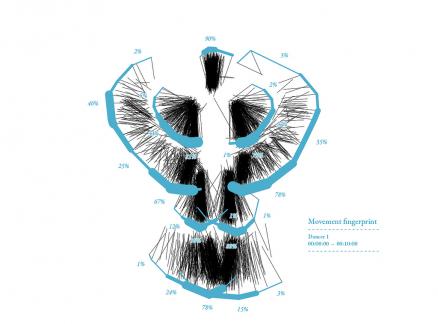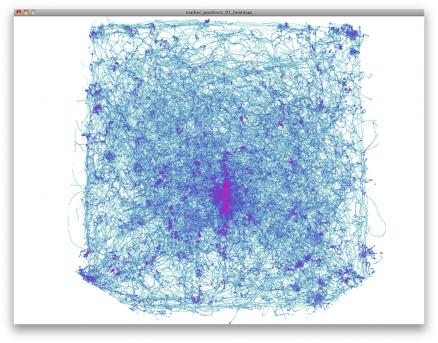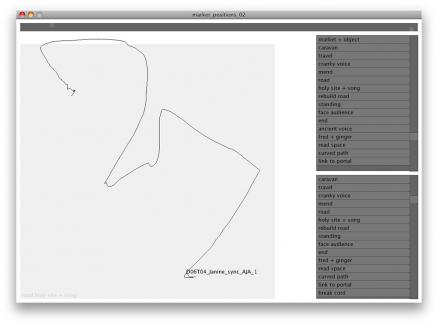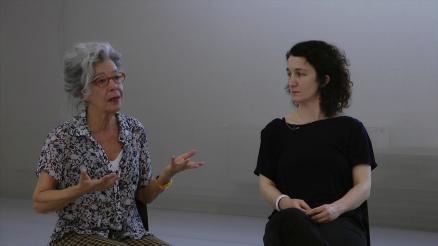Deborah Hay Score Production Session No. 1
Deborah HayScore Production Session No. 1After recording the solo adaptations and the trio (April & October 2011), the score team divided the work into mainly two parts. One part, lead by Florian Jenett, was analytic and included the extraction of the pathway of each performance using computer vision and the division of each performance into the its different sections according to the written score. The other part was Amin Weber's intuitive response to the No Time To Fly written score using his 3-D graphic animation tools. |
|
|
From 11-13 June 2012, they spent two days reviewing material and making interviews with Deborah Hay & Jeanine Durning in Frankfurt, DE. Having the pathway and the marker (or time variance of each section) data for each of the performance makes it possible to study the differences between each version of each solo of each performer and the differences between the solos of the three performers. To the right is a visualisation of all pathways of all 21 solos filmed in April laid on top of each other. Download this PDF for a closer look at this image and some other graphic sketches discussed during these two days. |
|
|
Florian Jenett said "time is the overall access we are hanging everything off of" and knowing when each performer starts each section of the score makes it possible to extract that particular section of a particular performance from the web of pathways in the above overlay visualisation. To the right is a screenshot of one of the tools (developed in the programming language processing) created for looking at each pathway separately. Download this PDF to have a look at another example, in this case for a section called "road". |
|
|
Amin Weber showed several studies he had done in working toward his own 'digital adaptation' of the No Time To Fly score. Deborah's feedback was that she liked a centre or vocal point in space and clear geometry. To see Amin's final result & gain insight into his working process visit the digital adaptation on score website. |
|
|
Deborah and Jeanine were also interviewed on the following topics: 1. The cellular body; 2. Making the piece and the score; 3. Elements in the score; 4. The dancers/ performers; 5. Audiences (what they see); 6. More on Questions/ Tools. These interviews form the core material introducing Deborah Hay's choreographic concepts to the visitor to the score website. |
|
Deborah Hay's Process Documentation Pages:
http://motionbank.org/en/event/deborah-hay-test-filming
http://motionbank.org/en/event/deborah-hay-score-project-solo-filming
http://motionbank.org/en/event/deborah-hay-guest-performances
http://motionbank.org/en/event/deborah-hay-final-filming
http://motionbank.org/en/event/deborah-hay-score-production-session-no-1
http://motionbank.org/en/event/deborah-hay-score-production-session-austin
http://motionbank.org/en/event/tanzkongress-deborah-hay-beta-release-workshops
INFO
As a response to the COVID-19 / Corona situation we just opened our research system (including Piecemaker and MoSys) for dance education and practice.
This year Motion Bank celebrates it's 10 anniversary. As soon as it becomes possible to make final plans we will release information about these.
Please consider subscribing to our newsletter.

























